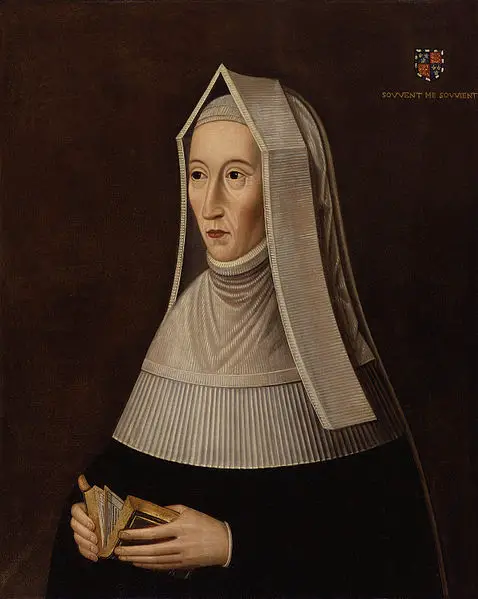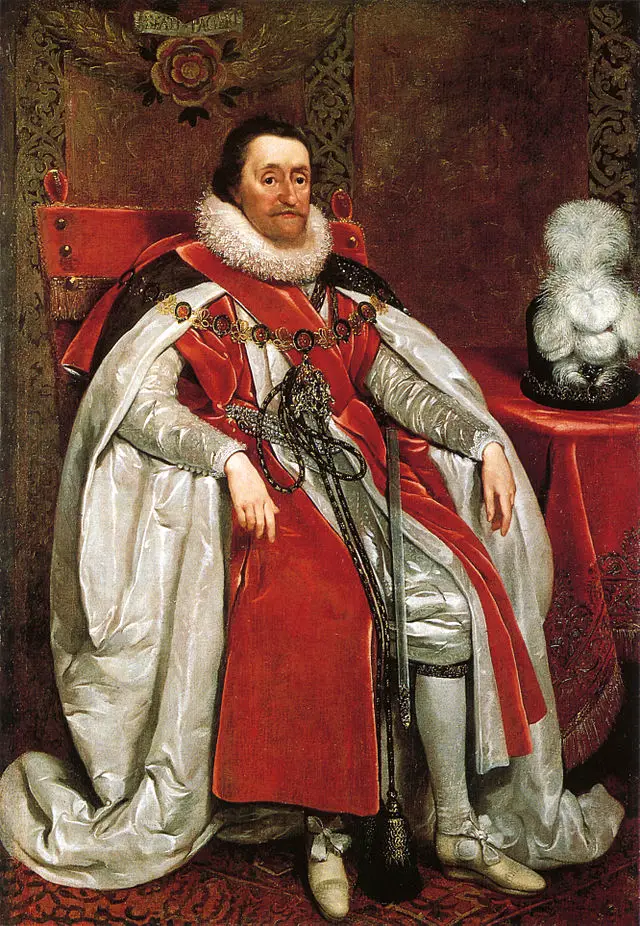22 June
1477 – Birth of Thomas Grey, 2nd Marquis of Dorset, courtier and constable of Warwick Castle and of Kenilworth Castle. He was the third son and heir of Thomas Grey, first Marquis of Dorset, and his wife, Cicely.
1528 – Death of William Carey, courtier, distant cousin of Henry VIII and husband of Mary Boleyn. He died of sweating sickness, leaving behind his wife and two children, Catherine and Henry.
1535 - John Fisher, Bishop of Rochester, was beheaded on Tower Hill. He was one of the many victims of Henry VIII and was executed for treason, for refusing to take the “Oath of Succession” and accept Henry as the Supreme Head of the Church of England.
1536 - Henry VIII’s eldest daughter, Mary, finally submitted to her father and accepted her father as Supreme Head of the Church in England and the invalidity of her parents' marriage.
1547 – Death of George Lokert (or Lockhart), Dean of Glasgow, logician and theologian. Lokert studied at the University of Paris and was prior of the Collège de Sorbonne.
1557 – Death of Richard Woodman, Protestant martyr. He was burnt at Lewes, in Sussex, with nine other martyrs after he refused to recant.
1599 – Death of Sir William Fitzwilliam, Lord Deputy of Ireland in Elizabeth I's reign, at Milton, Northamptonshire, after a long illness. He was buried at the church of Marham, Norfolk.
23 June
1556 – Baptism of Thomas Hood, mathematician and physician, at St Leonard Eastcheap. His works included the 1590 “The Use of the Celestial Globe in Plano, Set Foorth in Two Hemispheres”, the 1592 “The Use of Both the Globes Celestiall and Terrestriall”, the 1596 “Two Mathematicall Instruments, the Crosse-Staffe and the Jacobs Staffe” and the 1598 “The Making and Use of the Geometricall Instrument called a Sector”.1559 – Death of Thomas Dockray (Docwra), ecclesiastical lawyer and Master of the Stationers' Company. He was buried in the church of St Faith's under St Paul's. Dockray acted as a lawyer for the defence at the trial of Stephen Gardiner, Bishop of Winchester.
1576 – Death of Levina Teerlinc, painter and miniaturist, at Stepney. Originally from Bruges, Teerlinc, who was the daughter of Simon Benninck, a master illuminator, travelled to England in the 1540s. Teerlinc was court painter to Edward VI, Mary I and Elizabeth I, and produced many paintings and miniatures.
1586 – Death of Henry Cheke, translator and son of Sir John Cheke. He died in York and was buried in York Minster. Cheke's works included “A Certayne Tragedie Entituled Freewyl” and his translation of Tragedia del libero arbitrio.
1600 – Death of Richard Howland, Bishop of Peterborough, in his palace at Castor. He was buried in Peterborough Cathedral. Howland presided over the burial of Mary, Queen of Scots in 1587.
24 June
1509 - The joint coronation of Henry VIII and Catherine of Aragon at Westminster Abbey.1513 – Death of Sir Edmund Carew, administrator and soldier. Carew was killed at Thérouanne in Artois when the town was under siege by English troops. He was there as Master of the Ordnance. He was buried in the church of St Nicholas at Calais two days later.
1532 or 1533 – Birth of Robert Dudley, Earl of Leicester and favourite of Elizabeth I. Dudley was the fifth son of John Dudley, Duke of Northumberland, and his wife, Jane. Dudley served Elizabeth I as Privy Councillor and Governor-General of the Netherlands. There is some controversy over his birthday, with some of his contemporaries believing that he was born on exactly the same day as Elizabeth I (7th September 1533). However, it is now believed that he was born 24th June 1532 or 1533, most likely 1532, making him just over a year older than his Queen and great friend.
1604 – Death of Edward de Vere, 17th Earl of Oxford, courtier and poet. He was buried in the graveyard of the church of St Augustine, Hackney. Oxfordians believe that de Vere was actually the author of Shakespeare's works, and some people go as far as saying that de Vere was the son of Elizabeth I by Thomas Seymour.
25 June
1503 – Catherine of Aragon was formally betrothed to Prince Henry, the future Henry VIII, and second son of Henry VII. She had been married to Arthur, Prince of Wales, Henry VII's eldest son, but he died in 1501 after only six months of marriage.1533 – Death of Mary Tudor, Queen of France, the thirty-seven year-old sister of Henry VIII and wife of his friend Charles Brandon, Duke of Suffolk. She died at her home, Westhorpe Hall in Suffolk, and was buried at the local abbey in Bury St Edmunds, Suffolk. When the abbey was dissolved, however, her remains were moved to St Mary’s Church, Bury St Edmunds.
1539 – Baptism of courtier Gregory Fiennes, 10th Baron Dacre, the younger son of Thomas Fiennes, 9th Baron Dacre, and Mary, the daughter of George Neville, Baron Bergavenny.
1601 – Death of Peregrine Bertie, 13th Baron Willoughby, Beck and Eresby, at Berwick upon Tweed. He died of a fever. Bertie was the only son of Richard Bertie and Katherine, Duchess of Suffolk, 12th Baroness Willoughby de Eresby and the well known Protestant patron. Bertie was a soldier, nobleman, ambassador, Governor of Berwick upon Tweed and Warden of the East March.
26 June
1513 – Burial of Sir Edmund Carew, landowner, administrator and soldier, in the church of St Nicholas, Calais, after he was shot dead during the siege of Thérouanne in Artois.
1535 - A new commission of oyer and terminer was appointed for the county of Middlesex. The commission ordered the Sheriff of Middlesex to gather the Grand Jury on the 28th June at Westminster Hall. This was to try Sir Thomas More who, according to the indictment, had been “traitorously attempting to deprive the King of his title of Supreme Head of the Church”.
1568 – Death of Thomas Young, Archbishop of York, at Sheffield. He was buried in York Minster.
1576 – Death of Edward Dering, scholar, Church of England clergyman and controversial evangelical preacher, from tuberculosis at Thobie Priory in Essex. A collection of his works, which included sermons, lectures, prayers and letters, was first published in 1590.
1596 – Burial of Sir John Wingfield in the cathedral at Cadiz, Spain. He was shot in the head in the attack on Cadiz on 21st June. At Wingfield's funeral, “the generalls threw their handkerchiefs wet from their eyes into the grave” (Stow, 775) and the poet John Donne, who was a member of the expedition, composed an epigram as a tribute to Wingfield: “Farther then Wingefield, no man dares to go”.
27 June
1497 – The executions of Thomas Flamank and Michael Joseph (known as Michael an Gof, or Michael the blacksmith), two of the chief commanders of the Cornish rebels, at Tyburn.
1505 – Henry VIII renounced his betrothal to Catherine of Aragon, his brother's widow, claiming that it had been contracted without his consent. It was the day before his 14th birthday, the day on which the marriage was due to be solemnised.
1578 – Death of William Bradbridge, Bishop of Exeter, in poverty at Newton Ferrers. He was buried on the north side of Exeter Cathedral choir. His poverty was due to the deception of his sub-collector of taxes, Henry Borough, who embezzled taxes rather than paying them to the Exchequer.
28 June
1461 – Coronation of Edward IV at Westminster Abbey.1491 - Birth of Henry VIII, son of Henry VII and Elizabeth of York, at Greenwich Palace.
1497 – Execution of Sir James Tuchet, 7th Baron Audley, by beheading at Tower Hill. Like Flamank and Joseph, who were executed the previous day, he was one of the chief commanders of the Cornish rebels in the 1497 Cornish rebellion. The three commanders were captured after the rebels were beaten at the Battle of Blackheath in London.
1516 – Birth of Charles Blount, 5th Baron Mountjoy, courtier and educational patron. He was born in Tournai to William Blount, 4th Baron Mountjoy, and his third wife, Alice Brown, while his father was governor of Tournai. Mountjoy received an excellent humanist education and was tutored by the likes of Jan van der Cruyce, a friend of Erasmus, and Petrus Vulcanius of Bruges. Scholars such as Erasmus, Juan Luis Vives and John Leland dedicated works to Mountjoy.
1536 – Death of Richard Pace, diplomat, humanist, administrator and Dean of St Paul's, Exeter and Salisbury. He was buried in the church of St Dunstan in Stepney. Pace served Cardinal Wolsey as his Secretary, and was appointed Henry VIII's Personal Secretary in 1516. He was imprisoned for some time in 1528 and 1529 after being critical of the King's desire for an annulment. Pace suffered with ill health from 1522 onwards, which included fits, gastric problems and possible bipolar disorder.
1541 – Execution of Leonard Grey, Viscount Graney and Lord Deputy of Ireland, on Tower Hill. He was executed for treason after being accused of abusing his authority, encouraging attacks on the King's subjects and having Geraldine sympathies.
1557 – Birth of Philip Howard, 13th Earl of Arundel, at Arundel House, the Strand, London. Arundel was the only child of Thomas Howard, 4th Duke of Norfolk, and his first wife, Mary Fitzalan. Howard was married to Anne Dacre, daughter of Thomas Dacre, 4th Lord Dacre of Gilsland, who converted to Catholicism in the 1580s. Her conversion affected her husband, who was imprisoned and fined in 1586 for his faith, among other things. He was tried, attainted and condemned to death in April 1589, but he remained imprisoned in the Tower and died there 15th October 1589, allegedly after being poisoned by his cook.
1558 – Death of Thomas Darcy, 1st Baron Darcy of Chiche, courtier, soldier and administrator, at Wivenhoe. He was buried at St Osyph's Priory. Darcy served as Captain of the Gentlemen Pensioners in the Scottish campaign of 1547, was a member of the Privy Council in 1550 and served as Lord Chamberlain of the Household. He was arrested after he supported Northumberland's bid to put Lady Jane Grey on the throne, but was pardoned in November 1553.
1598 – Death of Abraham Ortelius, map maker, at Antwerp. He was buried in Antwerp's church of St Michael. Ortelius is known as the creator of the first modern atlas, the Theatrum Orbis Terrarum (Theatre of the World), which was published in 1570.
1603 – Death of Sampson Erdeswick, Catholic recusant and antiquary, at Sandon in Staffordshire. He was buried in the local church. Erdeswick claimed to be the real author of “The True Use of Armorie”, which had been published in 1592 under the name of William Wyrley, his assistant. His “A Survey of Staffordshire” was published after his death.
1621 – Death of Sir Richard Bulkeley, landowner and courtier, at Hen Blas, Beaumaris, Anglesey. He was buried at Beaumaris Church. Bulkeley owned lands in Anglesey and Cheshire.








Leave a Reply